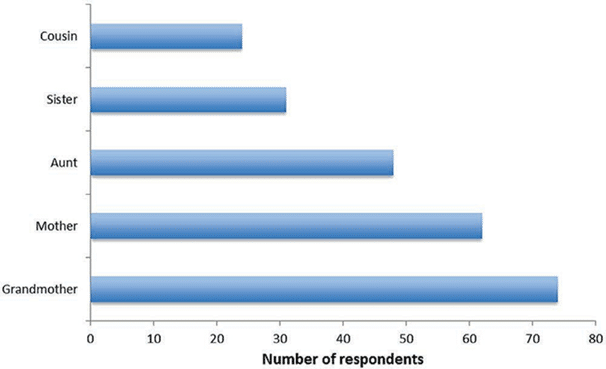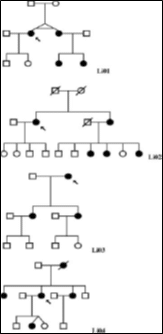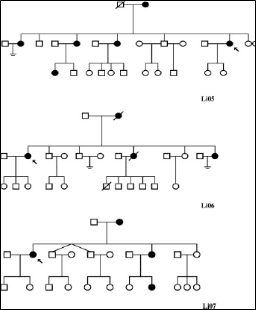Lipedema is a rather common, yet often painful disorder that affects the accumulation of fat cells in the body. While fat cells, otherwise referred to as adipose tissue, are an important feature in providing the human body with both cushioning and insulation, Lipedema causes the excessive congregation of these cells, particularly around the legs. Sometimes, spreading occurs in the torso, and in many cases, excessive clustering of fat cells is noticed in the arms as well. It’s estimated that arms are affected in nearly 80% of Lipedema cases reported.
Helpful Resources
Who is Affected by Lipedema?
Women tend to be the vast majority of individuals affected by Lipedema. It is estimated that 11% of women worldwide suffer from this disorder. Because Lipedema is highly resistant to both diet and exercise regimens, it’s not uncommon for women suffering from Lipedema to be misdiagnosed with either traditional obesity or lymphedema.
Symptoms and Stages of Lipedema
Lipedema can be noticeably characterized by the excessive and disproportionate appearance of nodular fat accumulations across the legs, hips, thighs, and often arms. Unlike Lymphedema, Lipedema has a tendency to affect both limbs equally and generally becomes more apparent over the course of time. It’s common for those who suffer from Lipedema to bruise rather easily as well. Overall, Lipedema appears in a series of three stages. Stage 1 presents in patients as skin that is flat stretched over pearl-sized nodules that show up within a layer of fat showing increased cell size. Stage 2 presents as indented skin that’s covering a layer of fat cells presenting as pearl to apple-sized masses. Stage 3 presents as pearl-sized nodules in combination with excessively large fat masses causing lobules along the legs, hips, and thighs and frequently extending to the torso or upper arms.

Potential Lipedema Cause
While there is not confirmed reasoning behind the development of Lipedema, many medical experts link the condition to significant hormonal changes that can occur in an individual’s body. This belief very much revolves around the fact that Lipedema tends to appear most often in women during pregnancy, near childbirth, and throughout menopause.
Genetics likely plays a role in the occurrence of lipedema. Studies have shown up to 60% of individuals with lipedema have a family member who also shows signs of the disease. Currently, there is no specific gene identified with this disease.

Recent Studies
Studies and research have long been carried out in an effort to better understand the physiological processes that define Lipedema. The work continues in the name of hoping to find cures to this disorder in the future. A recent study published in January 2019 by Doctors Sarah Al-ghadban and Karen Herbst focused on the histology of thigh skin and fat from a group of women suffering from Lipedema. They analyzed cell size fluctuations, lymphatic vessel size standards as well as the occurrence of immune cells infiltrating these tissues to learn more about how the disorder functions and progresses over time. The study showed there are dilated interstitial spaces with increased fibrosis mononuclear inflammation in the tissue of women with lipedema. This study also aimed to look at a potential correlation between a woman’s weight and the development of Lipedema(*1).
Research Logistics
The analysis of Lipedema tissue structure was carried out with the help of 49 participants divided into two groups based on their individual body mass index categorizing them as either non-obese or obese. 19 participants were considered controls while 30 suffered from Lipedema. Small sections of the thigh skin and fat were obtained from participants using biopsy methods before being analyzed using precision imaging software.
Study Findings and Conclusions
When the results of this study were analyzed, it was found that fat cells in those participants who were categorized as non-obese were significantly larger than in the control group while remaining very similar in size to those participants in the obese category and control group. Macrophage numbers, which tend to be significantly increased at sites of infection were heightened in both non-obese and obese samples as compared to control groups. Dermal vessels were shown to be significantly increased in non-obese participants as compared to non-obese controls. Additionally, areas of increased blood vessels, referred to as angiogenesis, were located in 30% of participants with Lipedema and not in control groups. Based on this study and its findings, it is believed that an increased number of macrophages and blood vessels, as well as the presence of dilated capillaries in thigh tissue and fat, can occur independently of obesity for those women suffering from Lipedema. It can be concluded that altered overall vasculature plays a significant role in the manifestation of this disease.
Family History & Lipedema
3 independent studies find lipedema is an inherited condition.
As reported by The Cleveland Clinic [#} on its website, the exact lipedema cause is unknown, but the condition runs in families and may be inherited. This statement is supported by three independent studies conducted by leading research teams in Europe who validated lipedema is a genetic condition. Lipedema appears to primarily affect females, presumably driven by estrogen as it usually manifests at puberty. Lipedema disorder is different from obesity and is often misdiagnosed as primary obesity because these conditions commonly overlap.
Researchers hope to continue to study as many families as possible with multiple cases of lipedema to create a stronger genetic linkage and determine the biochemical makeup of this disorder. Having this data may help researchers identify the gene that causes lipedema to increase understanding and improve treatment for this painful condition.

Fig 1. Bauer and etal. study reaffirms relatives of lipedema patients also suffer from lipedema. In most cases, grandmothers and mothers were affected the most, followed by aunts, sisters, and cousins.
Key Results and Findings of Family History & Lipedema
The familial nature of the condition suggests that lipedema can demonstrate heritability[1]. The exact nature of the form of inheritance is difficult to determine.
Of lipedema patients who participated in a study, 73% reported they had one or suspected multiple family members also had lipedema. Most frequently affected was the mother (38%), followed by grandmother (17%), aunt (8%), sister (6%) and cousin (5%).

A study from 2010 showed that within six families of more than three generations with lipedema disease, a genetic autosomal-dominant hereditary pattern [2]was found.
Frequent studies of mother-to-daughter mode of inheritance led researchers to theorize lipedema is a genetic disorder.


Fig 2. The largest family pedigrees (with a minimum of three living affected members in at least two generations) are demonstrated in Figure 2.
Family clusters of lipedema where more than one family member has the condition indicates a genetic component with a possibly X-chromosome[3] dominance inheritance pattern. All affected family members were female first- or second-degree relatives of female patients. One family had six living affected members in three generations, two families had five affected members, two had four affected members, and one further family had three living affected members. As lipedema appears to be most common at puberty, it is reasonable to assume that hormonal influence underlies the marked female limitation shown in studies to date. Estrogen is also considered to play a key role in regulating the manner of development of the condition.
References
Bauer AT, et al. Plast Reconstr Surg. 2019 Dec;144(6):1475-1484 https://pubmed.ncbi.nlm.nih.gov/31764671/
Ghods M, Georgiou I, Schmidt J, Kruppa P. Disease progression and comorbidities in lipedema patients: A 10-year retrospective analysis. Dermatologic Therapy. 2020;e14534. https://doi.org/10.1111/dtch.14534
Child AH, Gordon KD, Sharpe P, Brice G, Ostergaard P, Jeffery S, Mortimer PS. 2010. Lipedema: An inherited condition. Am J Med Genet Part A 152A:970–976. and Disease progression and comorbidities in lipedema patients: A 10‐year retrospective analysis.
[1] Heritability is a measure of how well differences in people’s genes account for differences in their traits
[2] Autosomal dominant inheritance is a way a genetic trait or condition can be passed down from parent to child.
[3] The X chromosome is one of two sex chromosomes. Humans have two sex chromosomes, the X and Y. Females have two X chromosomes in their cells, while males have X and Y chromosomes in their cells.
Dilated Blood and Lymphatic Microvessels, Angiogenesis, Increased Macrophages, and Adipocyte Hypertrophy in Lipedema Thigh Skin and Fat Tissue: March 2019 Journal of obesity 2019(4–10):1-10 DOI: 10.1155/2019/8747461



